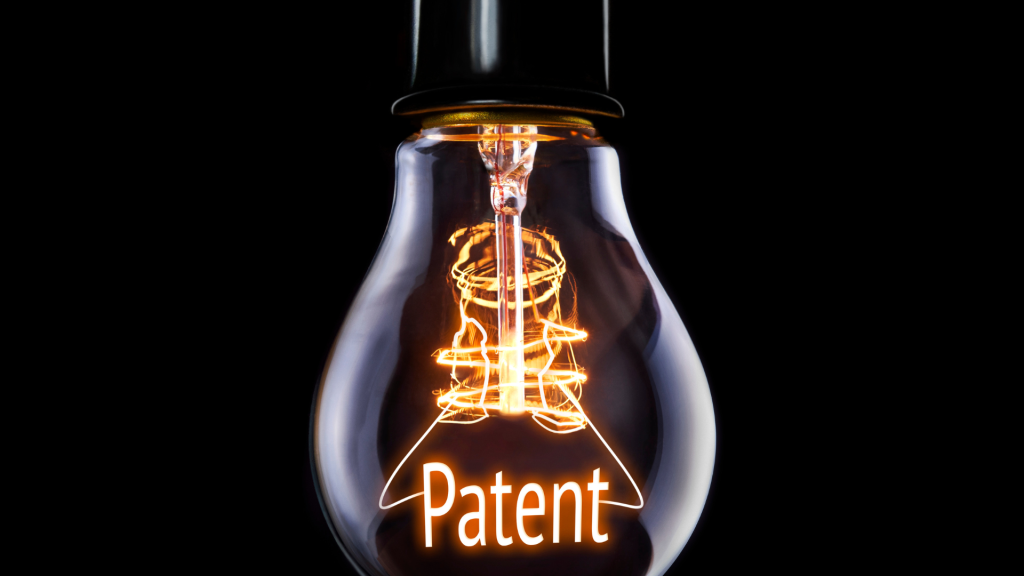Technology is advancing at a blistering pace. It permeates every area of our modern lives – from the specially-formulated shampoo we use in the shower to fight dandruff, to the fuel-efficient and electric cars in which we drive to work, to the synthetic materials used to create the clothing we wear. Many companies want to be a part of this future by being at the forefront of these advancements in technology. Going from a “good” company to a market leader – a “great” company – requires a culture where innovation is celebrated and efficiently generated systematically.
Jim Collins, in his number one best-selling book Good to Great (Random House Business Books, 2001), introduces an insightful framework for establishing company culture using the image of a mechanical flywheel. The flywheel captures his impression of “the overall feel of what it was like inside companies that went from good to great.” We believe that a particular flywheel architecture including as components the activities of patent filing and strategic portfolio management drives a company’s high performance innovation culture: a culture that systematically and continuously generates market leading technology.
Patents
Familiar companies whose products and services we use daily spend billions of dollars on research and development. According to the Intellectual Property Owners Association, Microsoft and Apple spend $20 billion USD a year on R&D, while Amazon reportedly spends a similar amount. The creations that come out of those organizations – Windows, the iPad, Amazon Web Services – are woven into the fabric of our daily lives. Each of those companies are valued in the hundreds, if not thousands, of billions of dollars, because of these creations that we use every day. Each of these companies has at least one thing in common – thousands of patents. In 2022 alone, Microsoft received 1888 patents, Amazon received 2051 patents, and Apple received 2313 patents.
Strong patents can be directly valuable: they can and do result in a windfall for companies that identify and pursue infringers. Among other large awards, in 2018, a Delaware jury awarded IBM $82.5 million in 2018 in its suit against Groupon.
But value need not come only from a successful infringement suit. Patents are assets, like hardware, furniture, and real property. IP questions are often the first thing venture capital outfits ask when looking to invest. A 2006 study by Hsu et al, “Patents as Quality Signals for Entrepreneurial Ventures,” found that doubling the size of a patent portfolio led to a 28% increase in overall valuation. A 2021 study by Richardson et al. (available at https://www.ipwatchdog.com/2017/04/18/2016-patent-prices-key-diligence-data/id=81708) found that the asking price for the average patent was $208,000.
Patents are most valuable as assets when they are filed and managed to align with the company’s business, product, and technology strategies. For example, patents can be strategic assets when the claims protect future value streams enabling a company to essentially commercialize the patented innovations exclusively. Strategically aligned patents further provide the opportunity to capture all of the economic value that the patented innovations generate. Such patents protect future profit and revenue streams when directed to differentiating and market leading features or functions. A company can also leverage patents defensively and offensively to capture all of the economic value that the patents themselves generate. For example, to mitigate litigation or competitive risks, patents can be used for counter-assertion or deterrence. Finally, the more value protected by the patent, the more valuable the patent, not only from owning, but also through licensing or selling the patent to a third-party.
A well executed patent filing, acquisition, and portfolio management program, therefore, can be a strategic and competitive advantage for an innovative company. Nevertheless, it is an advantage when patents not only merely protect innovations, but more important, when filing patents also contribute to the generation of more innovations. Applying the flywheel framework, we believe that an operationally efficient patent program that is aligned with a company’s strategies will increase inventor engagement and drive a high performance innovation culture that systematically generates market leading technology.
Innovation Flywheel
In Good to Great, Jim’s flywheel is a massive 5000 pound metal disk mounted horizontally on an axle. The task is to get the flywheel rotating on the axle as fast and as long as possible. Pushing the disk initially even with great effort only produces imperceptible results. For example, at first the flywheel only inches forward. After persistent effort the flywheel eventually completes one entire turn. With continued effort in a consistent direction, the flywheel turns through two… four… one hundred… one thousand rotations per minute, building speed and momentum with each turn. Then, at some point, there is a breakthrough moment. In that moment, the momentum of the flywheel drives it forward with its own weight even with less effort than during the first turn. Each turn builds upon the work done previously compounding investments of effort. Collins writes: “The huge heavy disk flies forward, with almost unstoppable momentum.”
Observing companies experiencing the good-to-great transformations, Collins found the flywheel analogy compelling. No single defining action, program, nor killer innovation, explained how the transformations happened. Instead, transformations came about by a cumulative process: step by step, action by action, decision by decision, i.e. turn by turn of the flywheel, which added up to sustained and exceptional performance. In fact, what we experience or observe as company culture is actually those interlocking components comprising the steps, actions, and decisions that build one upon another to drive unstoppable momentum: the flywheel effect.
The flywheel framework was so compelling that Amazon invited Jim to engage CEO Jeff Bezos and his executive team to teach them the flywheel effect in the midst of the dot-com crisis. In a 2019 follow-up to Good to Great, Collins shares the disciplined thought process for creating the first Amazon flywheel. Bezos and his lieutenants sketched their flywheel to articulate the magic momentum necessary to drive the enterprise at its best and infuse the culture with an obsession to create more value for more customers. Amazon committed fully to its flywheel and rode its momentum to becoming one of the most successful and enduring companies emerging out of the dot-com era.
Innovation cultures are essential for consistently creating differentiating technology and an enduring competitive advantage in the marketplace. The underlying flywheel architecture of any company culture includes four to six interlocking components representing activities such that each component follows from the previous to create a circular path back to the first component. In other words, the interlocking components form a loop that cycles back upon itself to accelerate momentum driving the flywheel forward. A high performance innovation culture necessarily involves compounding interlocking components generating and commercializing new ideas and inventions. A portfolio of patents that meet the requirements for filing and allowance in any patent office anywhere in the world includes probably the most valuable and thoroughly curated ideas and innovations in any company.
To file a patent application first you must start with an invention disclosure describing in some detail the concept that is the inventor’s solution to a technological problem. After the invention is captured, a patent attorney along with other stakeholders in the company review the disclosure and evaluate whether to file a patent to protect the invention. Based on the intrinsic value of the underlying invention or the strategic importance of the patent, the patent attorney files one or more patent applications claiming the invention in relevant jurisdictions worldwide.
Every filed application includes a written description and diagrams drafted by either the in-house patent attorney or by law firm patent counsel engaged by the company. The filed application describes the invention in a narrative form to tell the problem-solution story and to define the scope of protection claimed. Once filed within 18 months the claimed invention is published, except when non-publication is requested in the United States (US), in which case the invention will be publicly available only after a patent is granted by the US patent office. After prosecuting the application and negotiating with a patent office the scope of allowable subject matter, if any, the company receives a granted patent.
Inventors are generally excited about successfully receiving a granted patent since it provides for them recognition as experts inside and outside the company. Many companies have rewards programs that compensate inventors financially for filing and successfully receiving granted patents, further incentivizing the disclosure of more inventions.
Often, in-house patent attorneys periodically present internal reports and other communications about filed and granted patents to senior executives and technology and marketing leaders throughout the company. Also, in-house patent attorneys provide training to employees using previously filed and granted patents as examples of subject matter eligible for protection. These presentations, reports, trainings, and communications help scale and cross-pollinate innovations by making more innovators aware of the work that results in patents or potential improvements to patented solutions. After such awareness activities, inventors inevitably submit more invention disclosures.
These patent filing components establish the patent-to-innovation flywheel generating recurring loops of patented inventions for disclosure, filing, publication, grant, inventor recognition, and consequently, more inventing, which contribute to the magic momentum driving a high performance innovation culture.
The patent flywheel, however, requires buy-in from senior leadership and other stakeholders to start and keep it spinning. This can be difficult to do, given the cost. AIPLA estimates that the average cost for preparation and filing of one U.S. patent application on software innovations, for example, is about $13,000, while each office action response can cost $3,500. The average cost for one patent starts at about $40,000 USD.
A strong patent program needs to get buy-in from the innovators as well. A 2016 survey of patent programs by Lecorpio found an interesting statistic: eighty percent of companies provide some form of inventor incentive. Many of the well-known companies that create our future have them.
Apple’s program reportedly awards $4,000 USD per filing. In addition to reported financial compensation, Microsoft awards stackable “patent cubes” and Amazon gives its inventors interlocking acrylic puzzle pieces. Other successful patent programs include public acknowledgements or competitive prizes for the most innovative engineer/team. These incentives, while relatively inexpensive, are prized by engineering teams at companies around the world. Companies should embrace these relatively modest investments for creating valuable innovations.
It’s not enough to simply set up a program. Like the flywheel, it can drive itself if it is set in motion without significant friction within and between the interlocking components.
Three critical components for successful, frictionless programs are:
- An easy invention disclosure process – one that enables inventors to submit their ideas easily and often.
- A straightforward patent decisioning process based on business, technology, and product strategies – a clear, easy-to-follow set of steps for determining whether to pursue a patent, a trade secret, or no protection.
- Communicating successful patent filings to recognize inventors and promote awareness of innovation throughout the company – publicizing patented inventions incentivizes more inventing.
While these processes can add significant friction and slow the flywheel, a carefully architected flywheel drives forward momentum. The flywheel framework does not only apply to driving the success of iconic technology companies like Amazon navigating economic crises. The flywheel effect can be found in any organization, department, or team producing repeatable successes arising from compounding steps, actions, and decisions. Tracing around the patent-to-innovation flywheel, the logic is inexorable: each component sets up the next component essentially throwing you around the innovation loop. The magic momentum is seeing the results, feeling the flywheel beginning to build speed. That’s when inventors and stakeholders line up to throw their shoulders against the disk and push. And that’s what drives a high performing innovation culture.
___
This post was originally published by Finnegan, Henderson, Farabow, Garrett & Dunner, LLP.



